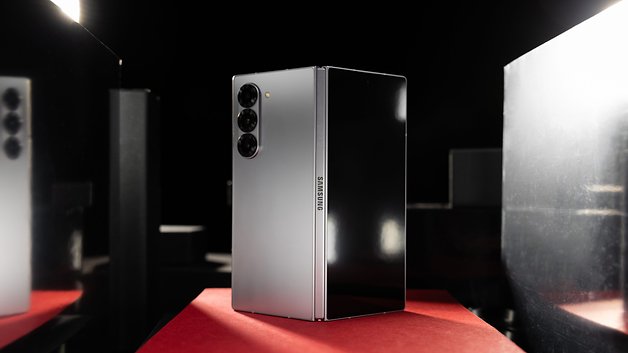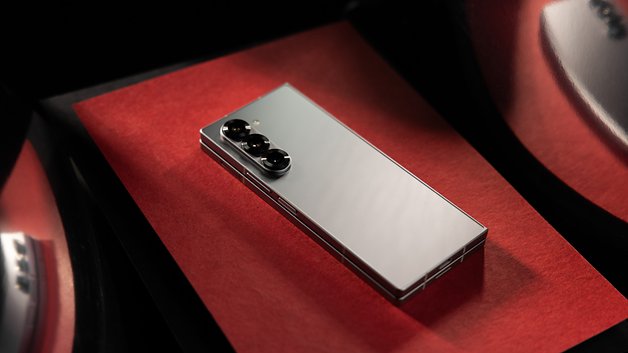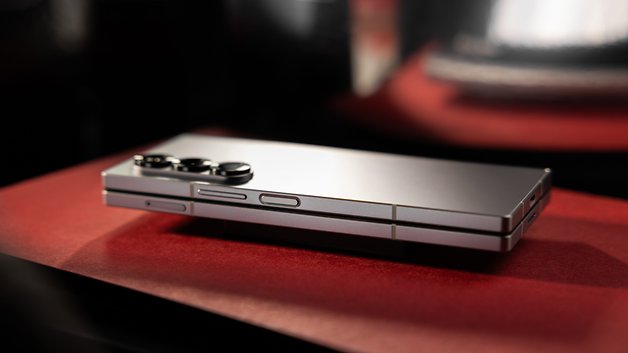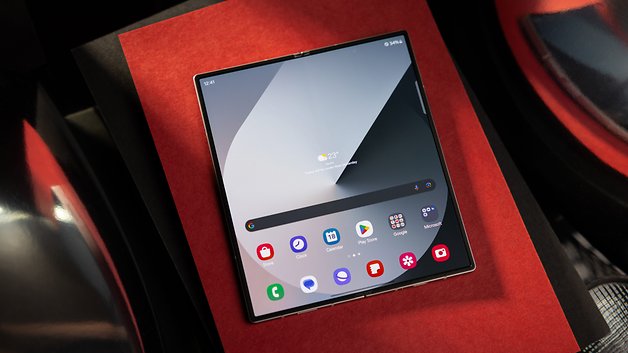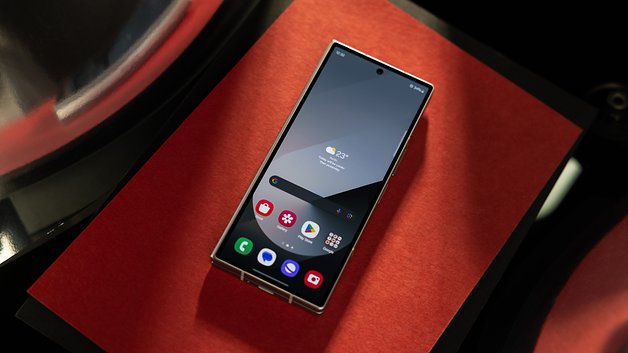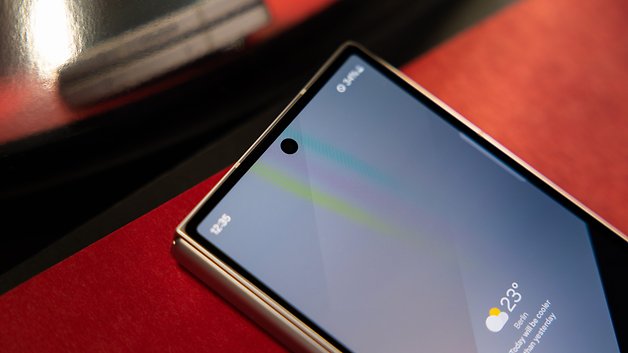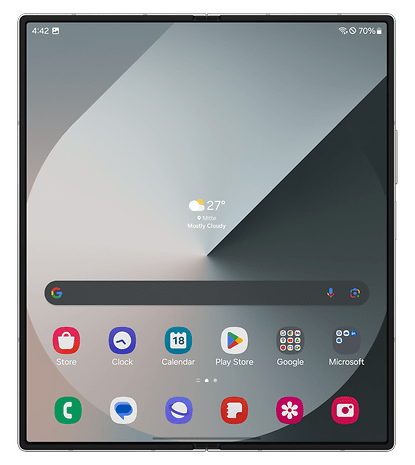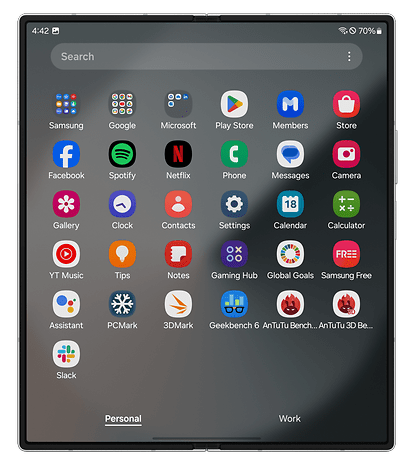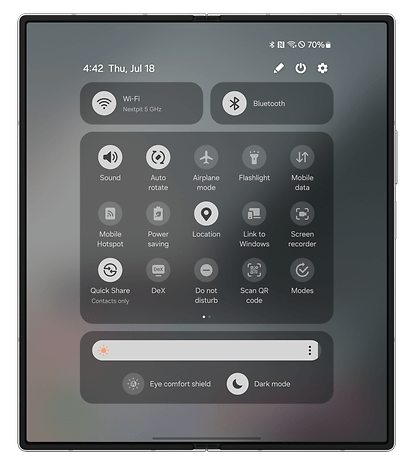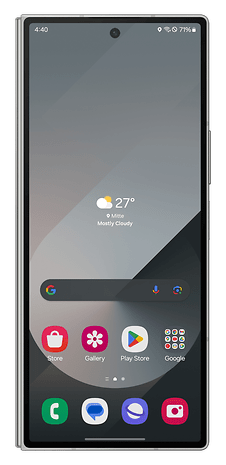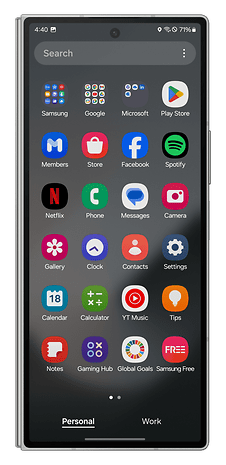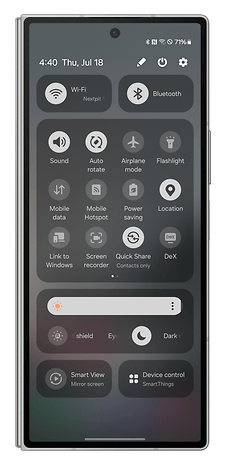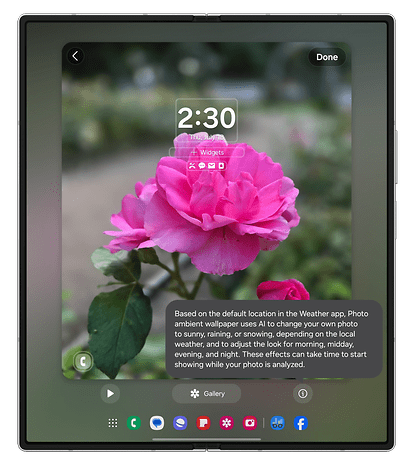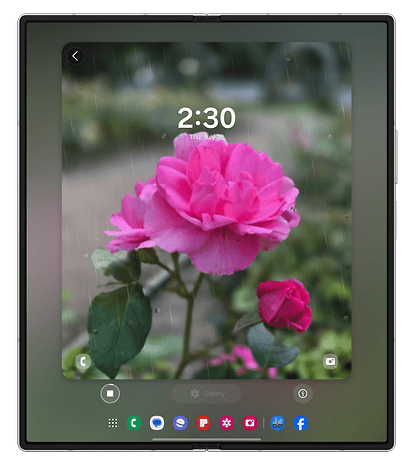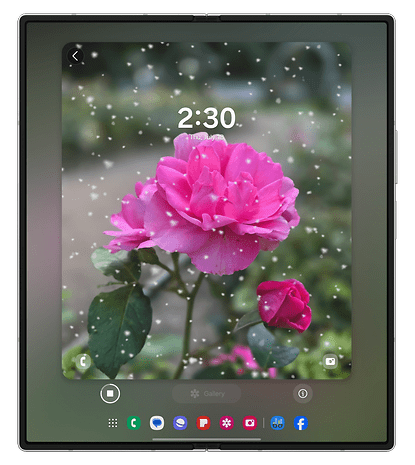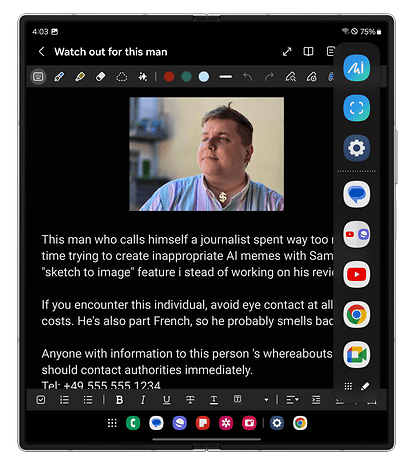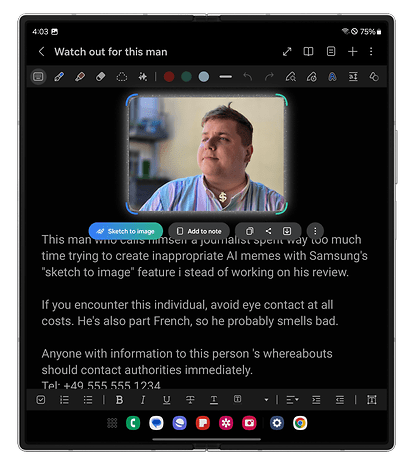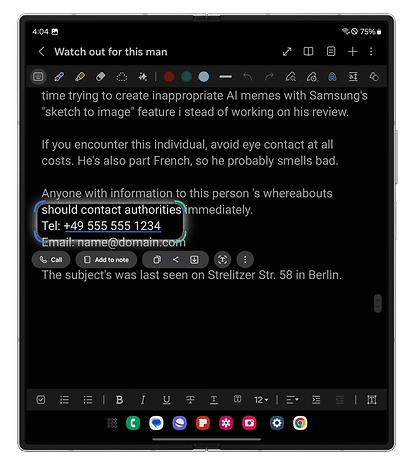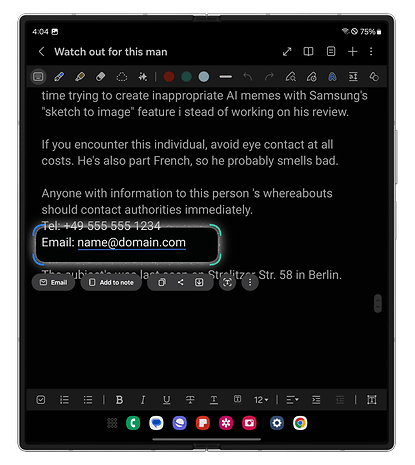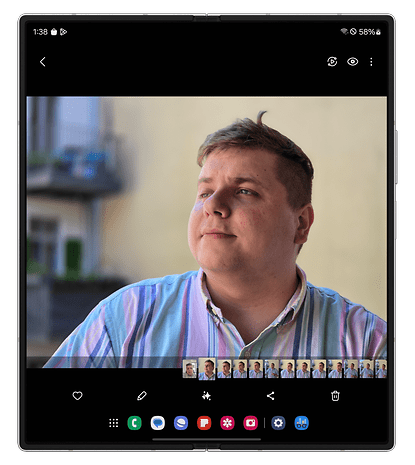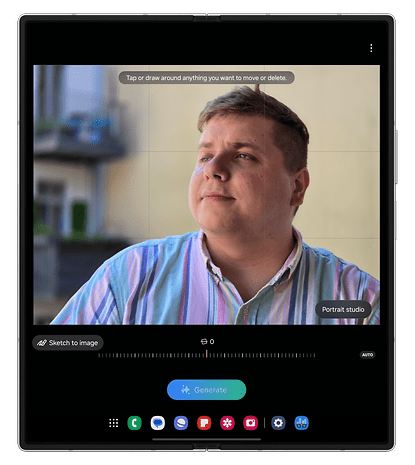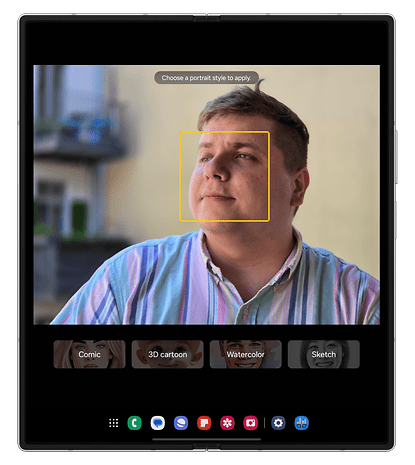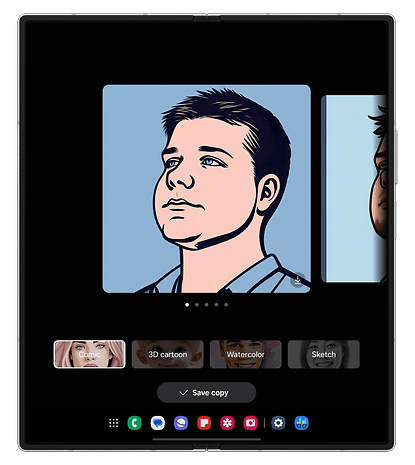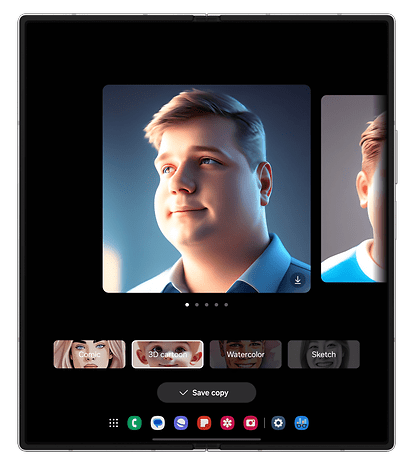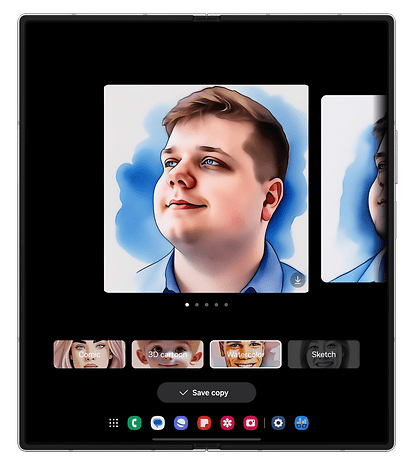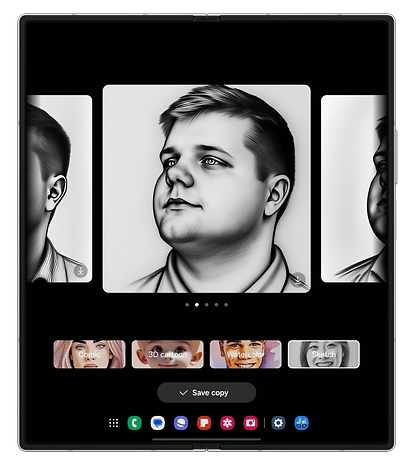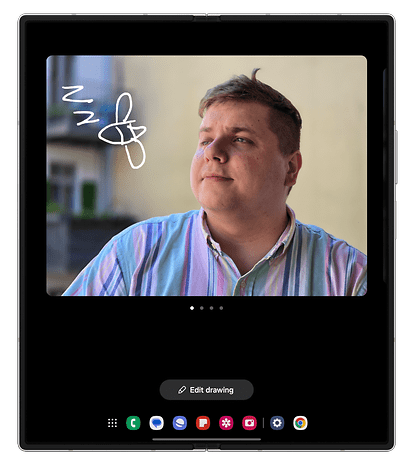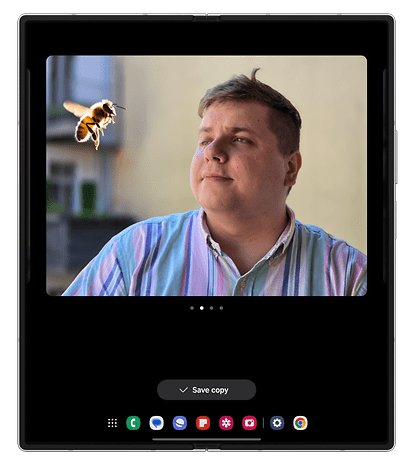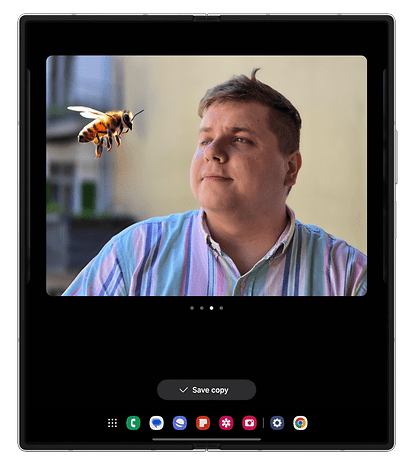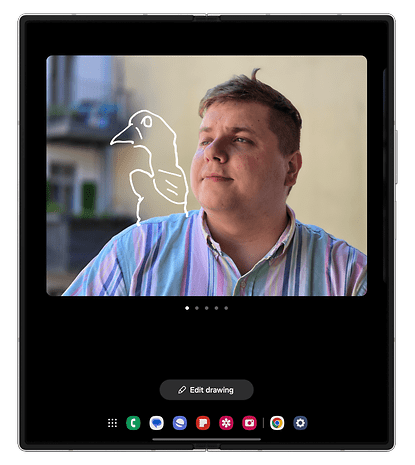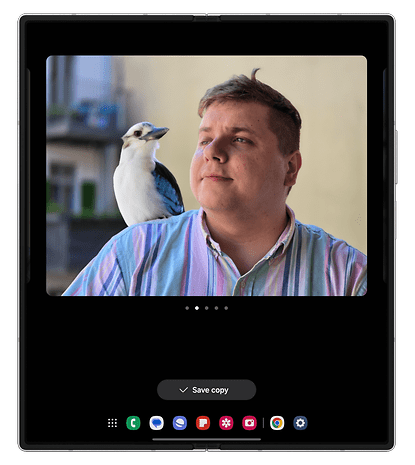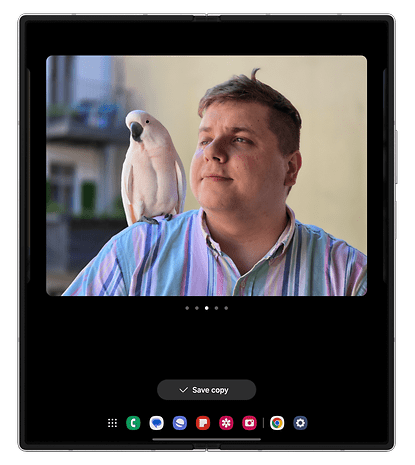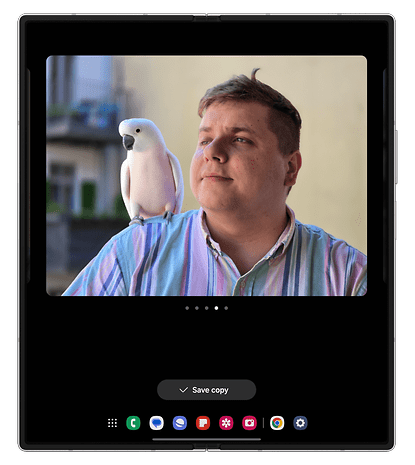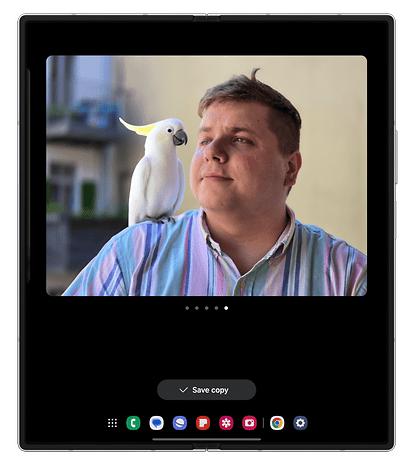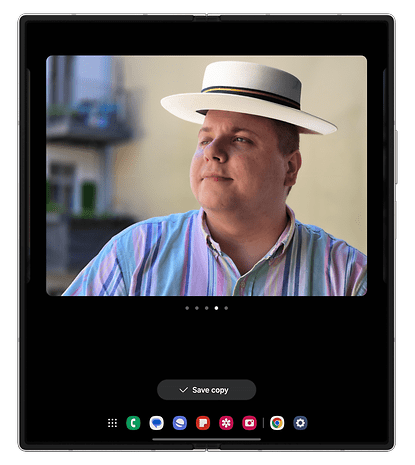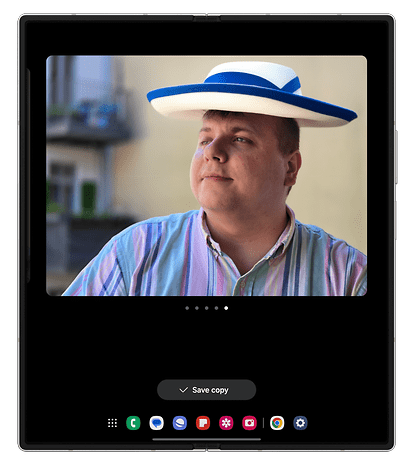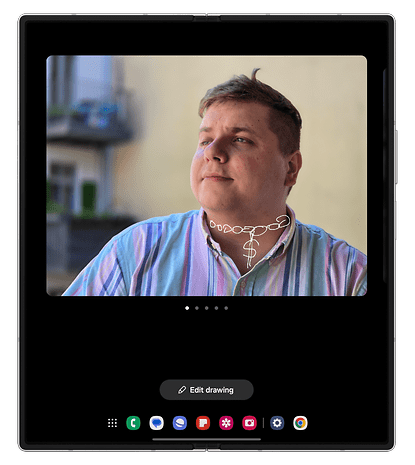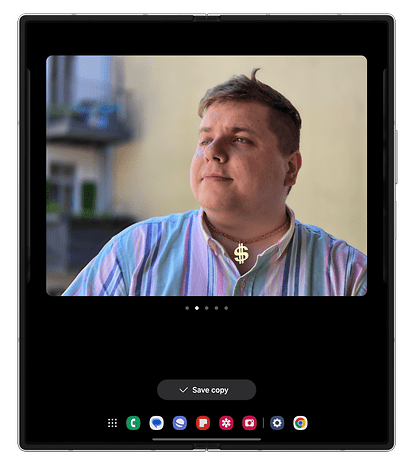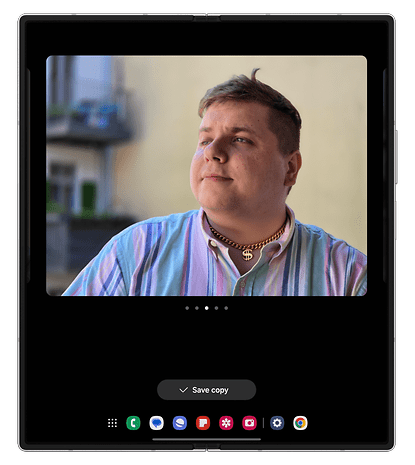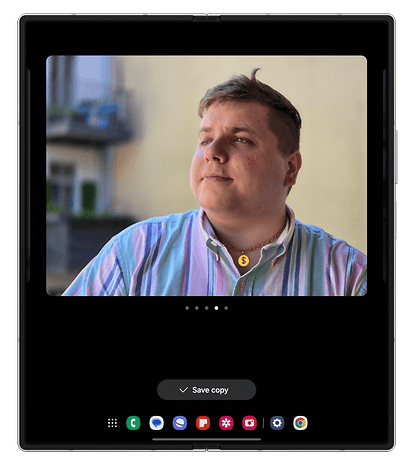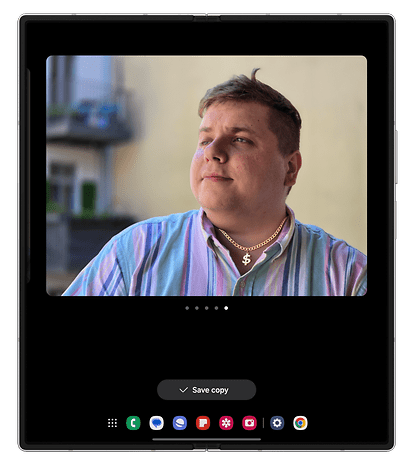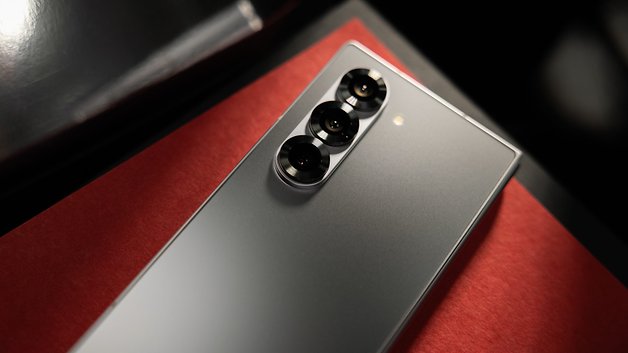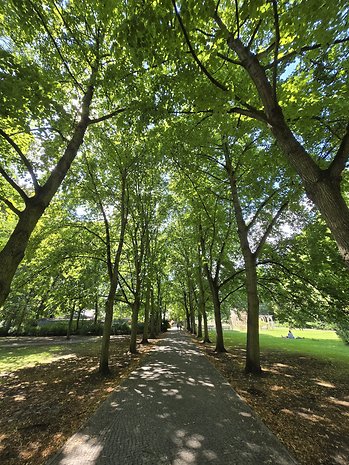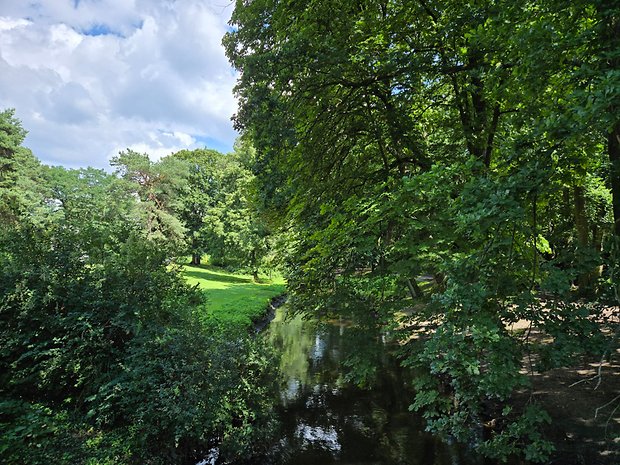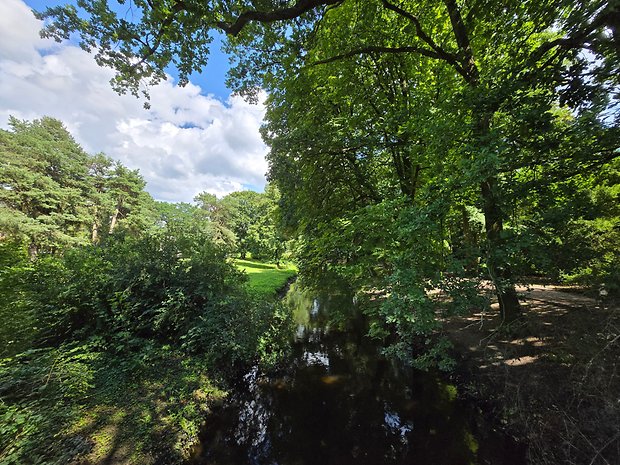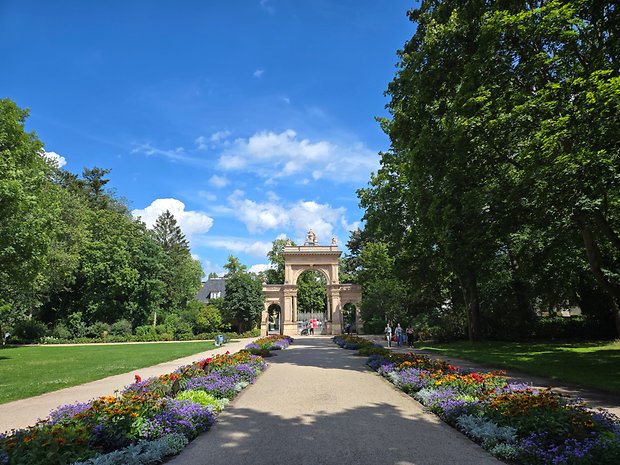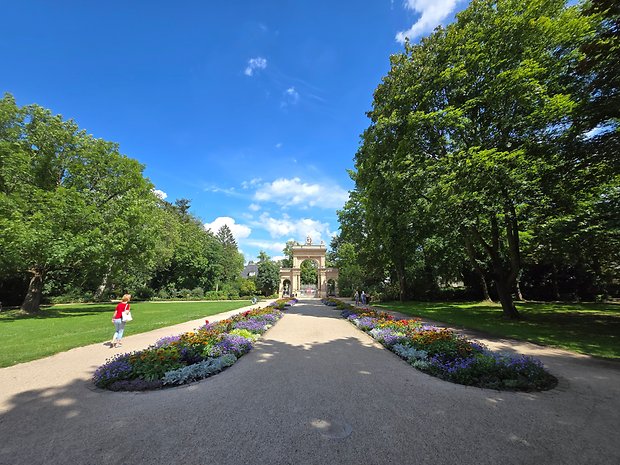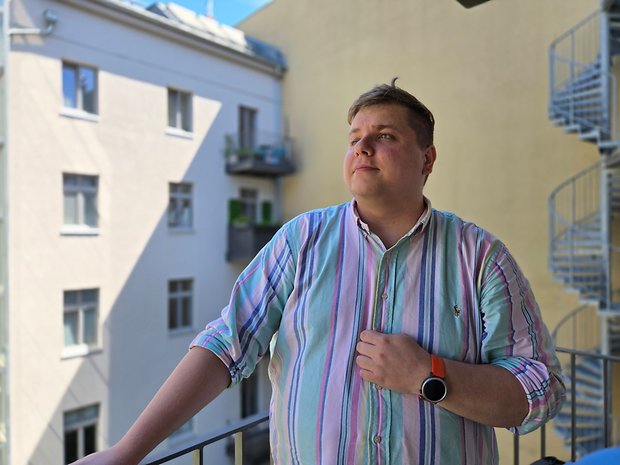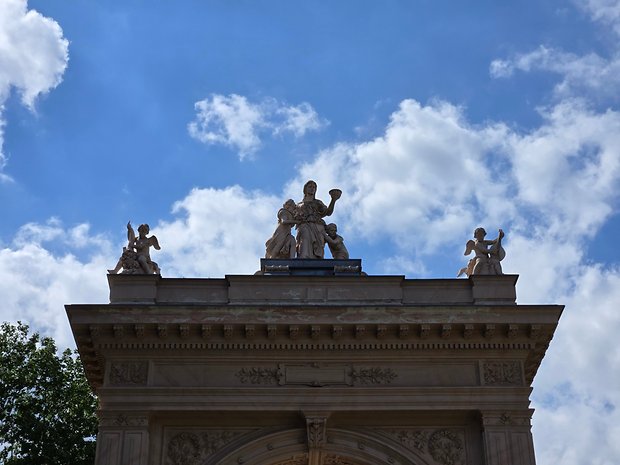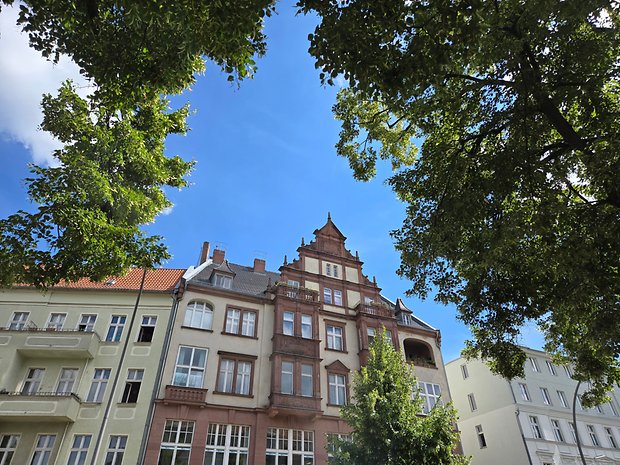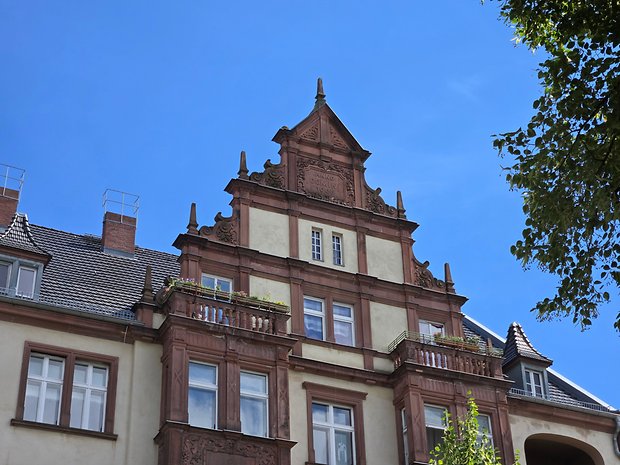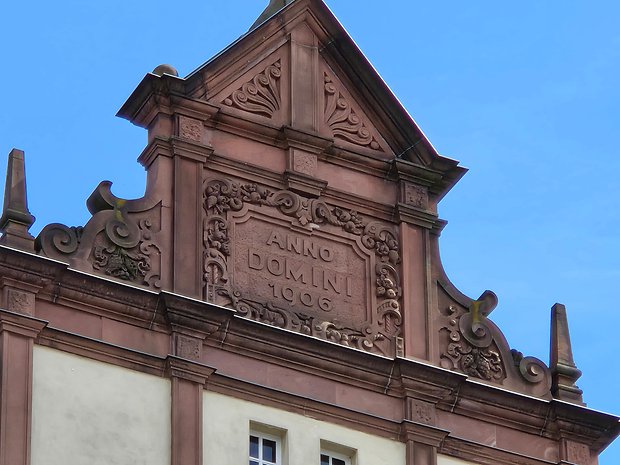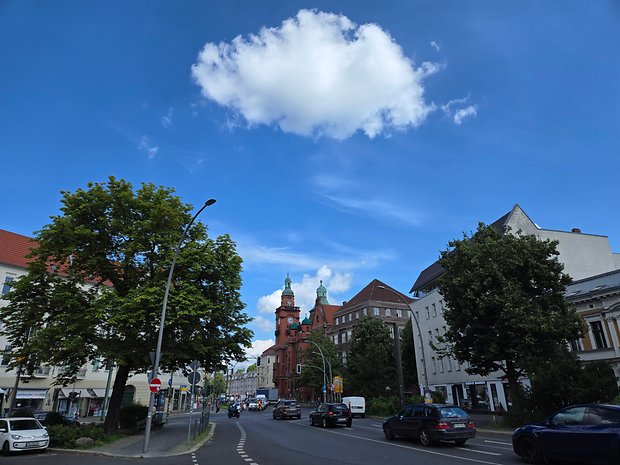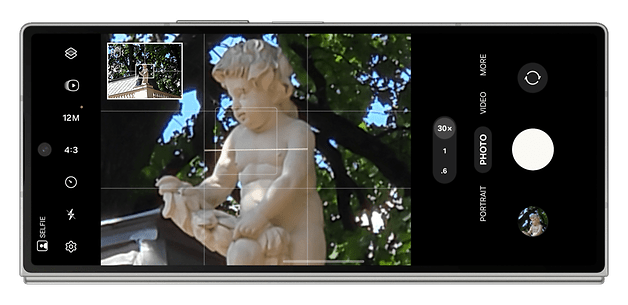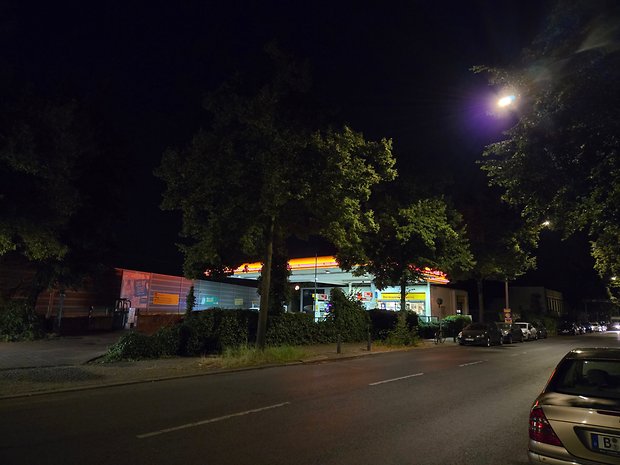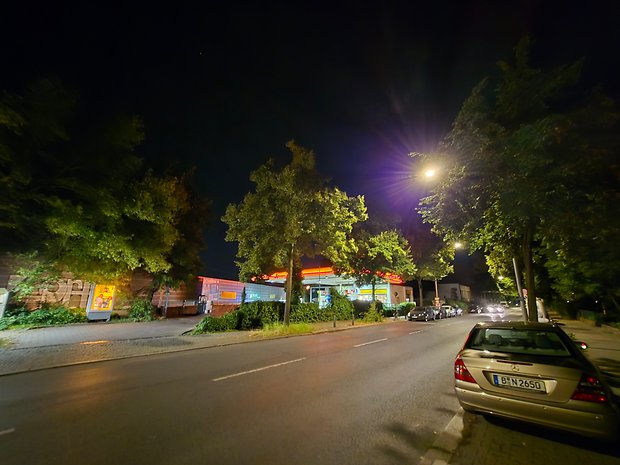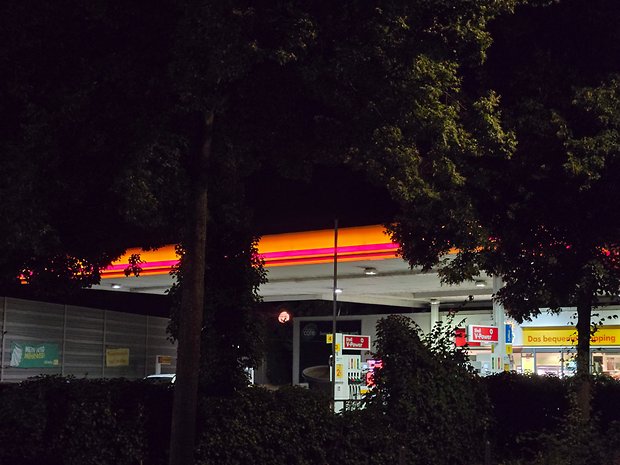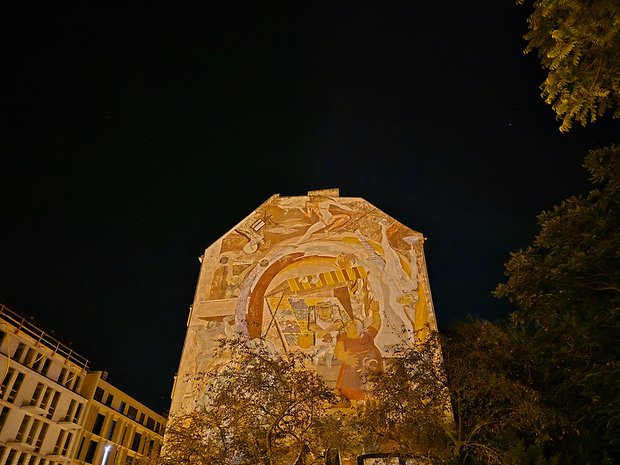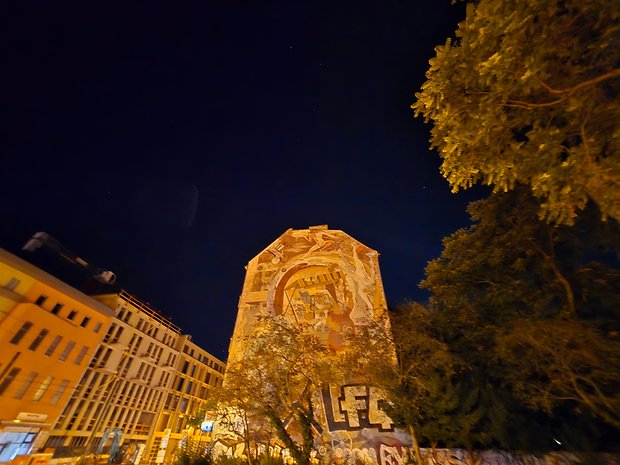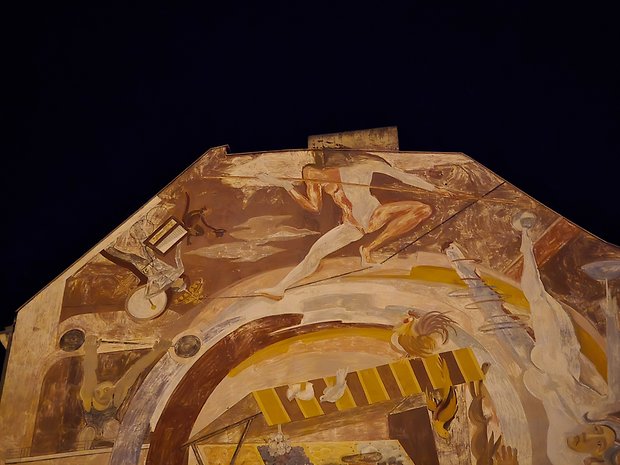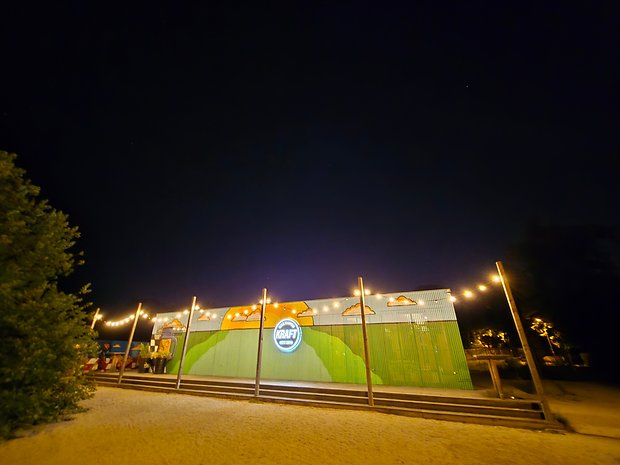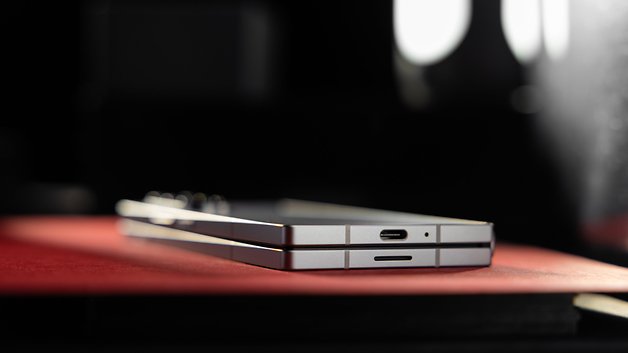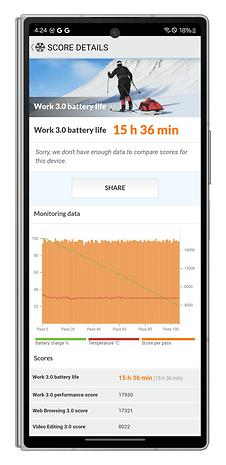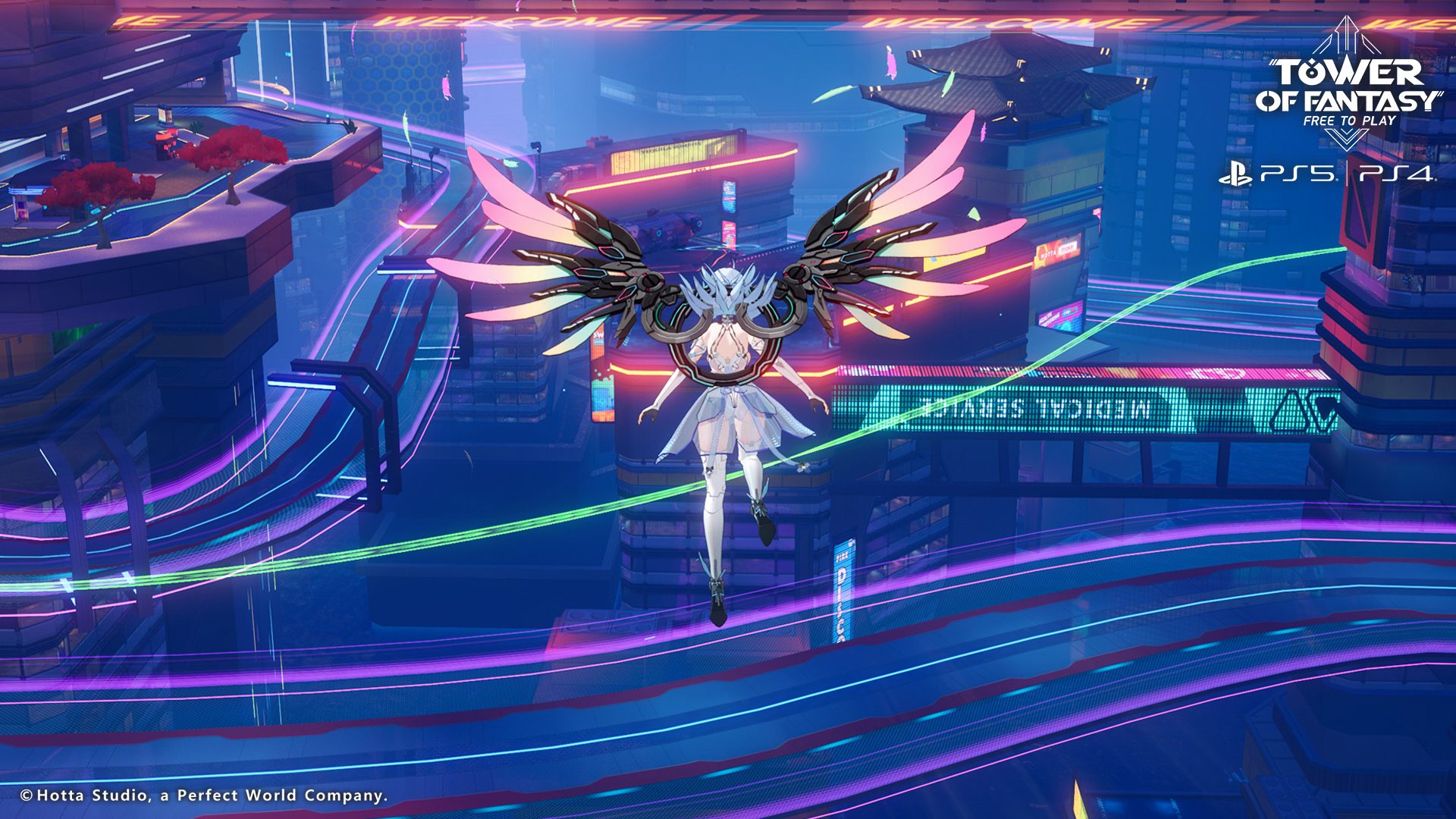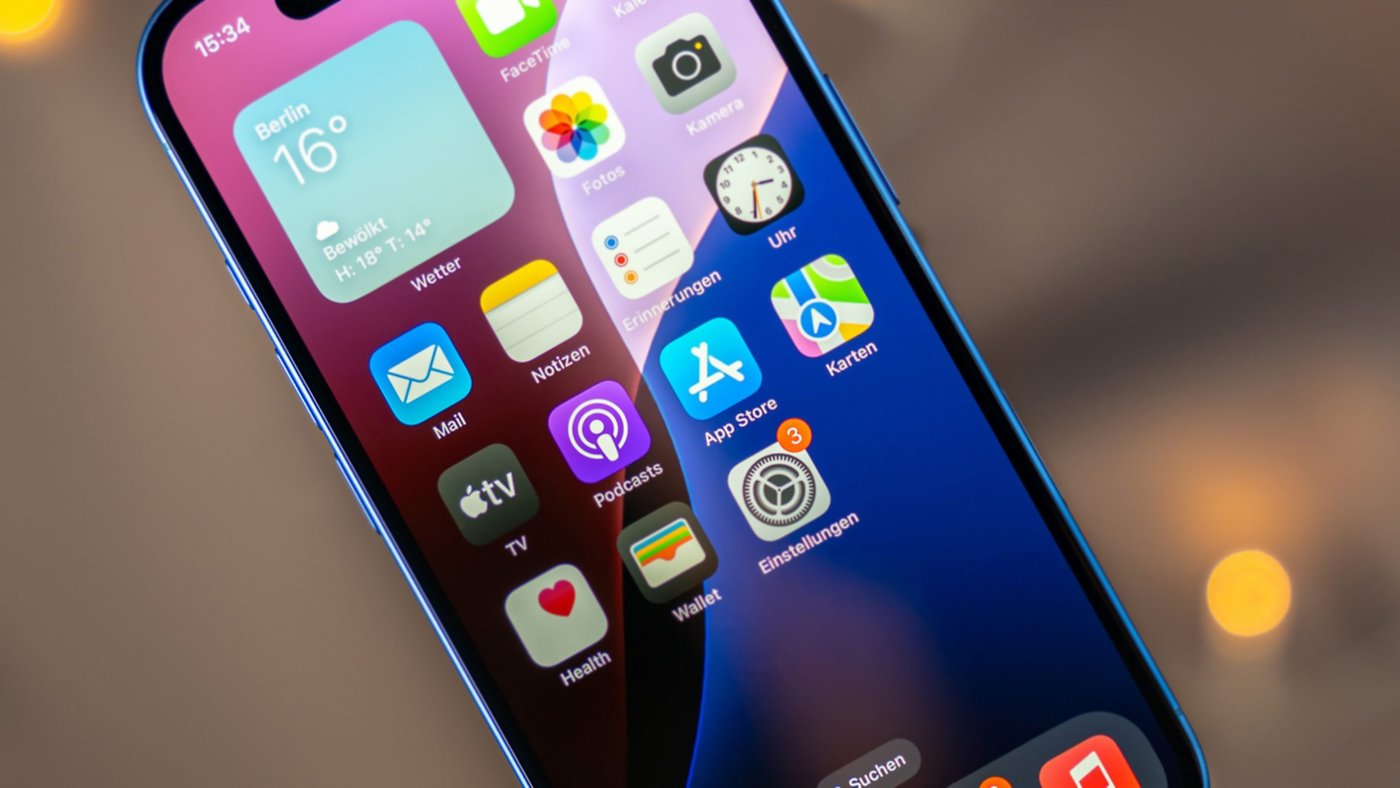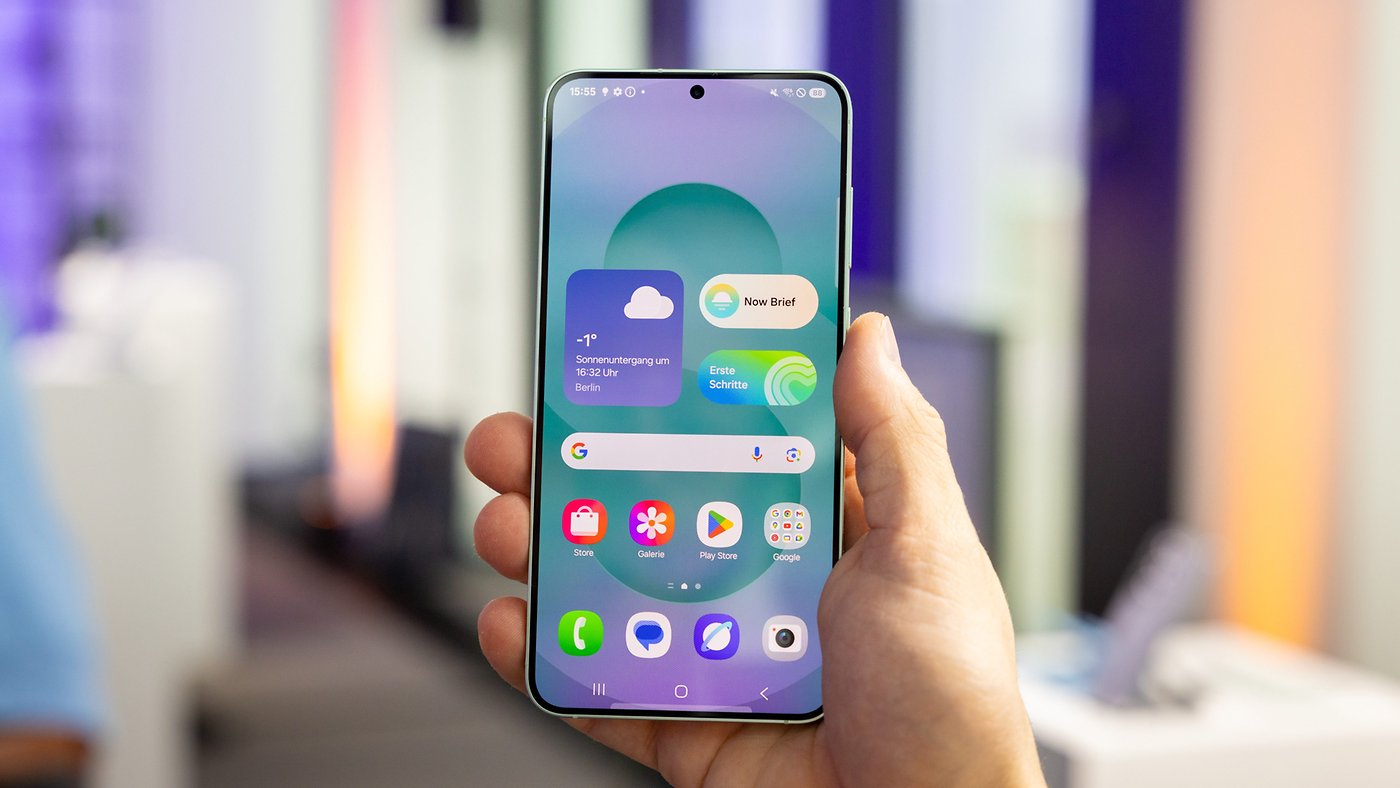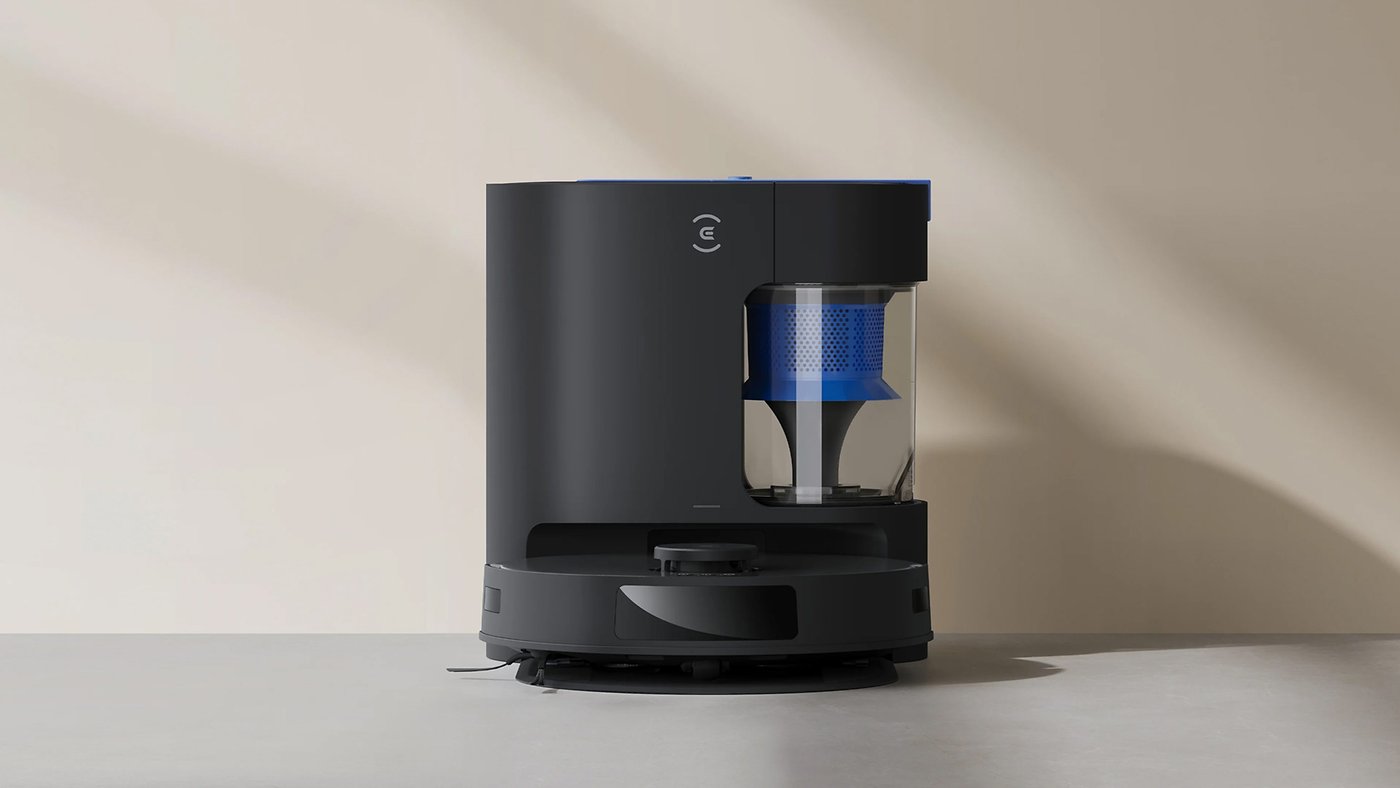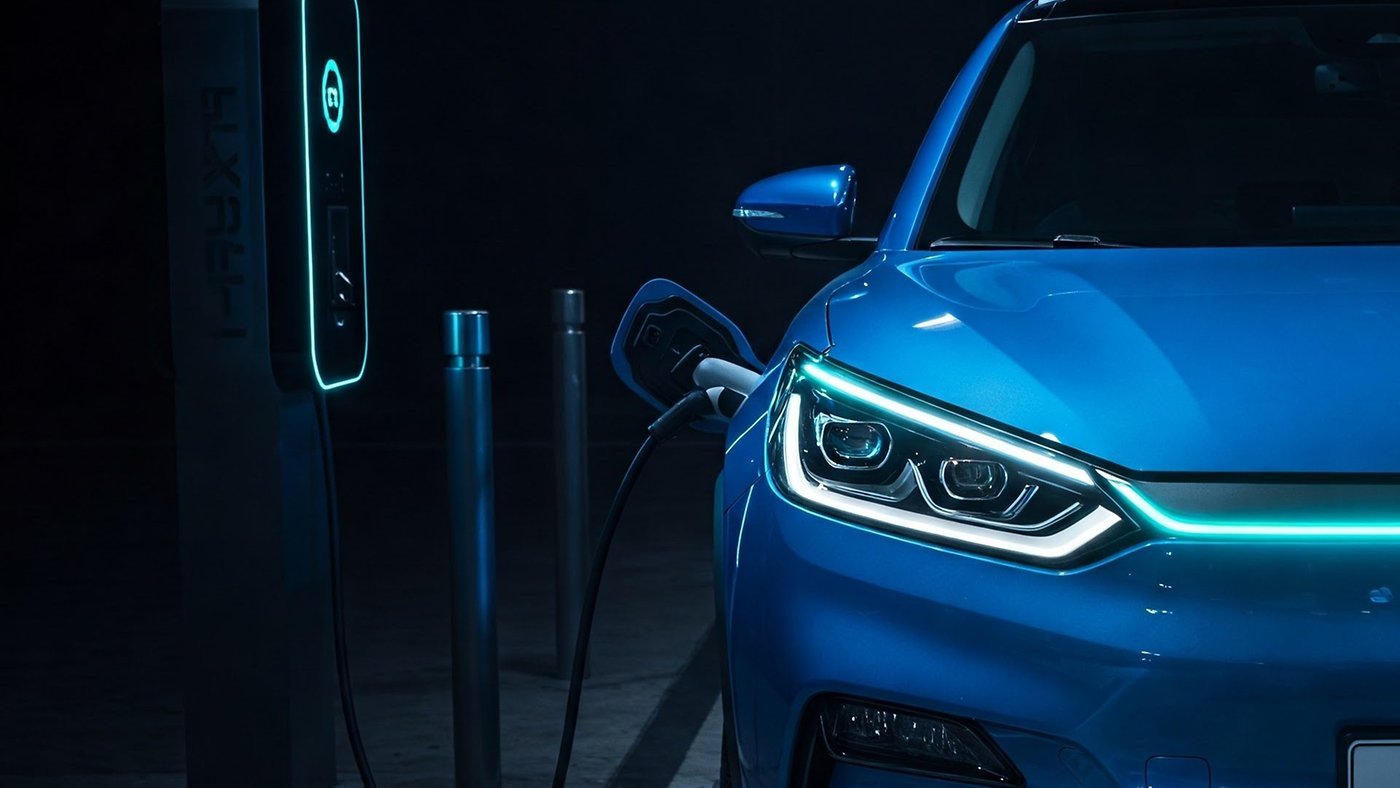
The Galaxy Z Fold 6 is the most expensive Samsung smartphone on the market. It has a lighter and more durable form factor, boasting full IP certification for the very first time after five generations. It’s also packed with AI features. This also proves Samsung, having lacked any serious competitor in the foldable smartphone market, is taking it easy. In this full review, I will share my honest opinion about the Galaxy Z Fold 6, its improvements but also its mediocrity.
Good
- Top-quality finish
- IP certification at last
- 7 Android updates + 7 years of security updates
- Some Galaxy AI functions are impressive
- Adequate battery life
Bad
- Internal selfie camera is pretty much useless
- Photo quality not worthy of a $1,900 smartphone
- Wired charging speed is far too slow
- Fully unfolded screen mode drains battery far too quickly
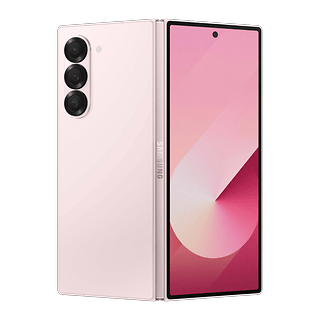
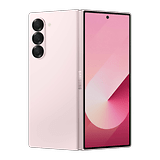
Samsung Galaxy Z Fold 6: All deals
The Samsung Galaxy Z Fold 6 in a nutshell
The Samsung Galaxy Z Fold 6 has been available for pre-order ever since it was unveiled on July 10, 2024. Samsung’s foldable smartphone comes in three memory configurations:
- 12 / 256 GB: $1,899.99
- 12 / 512 GB: $2,019.99
- 12 / 1024 GB: $2,259.99
The Galaxy Z Fold 6 is $100 more expensive than the Galaxy Z Fold 5 (review) which in turn, was also more expensive than the Galaxy Z Fold 4 (review).
Design and screen
The Galaxy Z Fold 6 is 14 g lighter than the Galaxy Z Fold 5, with more angular corners, as found in the earlier Galaxy Note devices. For the first time in a foldable Samsung smartphone, the Z Fold 6 is IP48 certified. The cover screen is also a little larger and its edges are more symmetrical. However, all these changes are almost redundant as they are not noticeable in everyday use.
Pros:
- Gorilla Glass Victus 2 in front and at the back.
- IP certification, at last!
- More comfortable to hold than before.
- Top-quality finish.
Cons:
- The 14g weight reduction is not obvious.
- The selfie camera under the internal screen is too visible.
- Design “evolutions” are too minimal.
Very, very subtle design changes
The Galaxy Z Fold 6 is available in five colors: white, gray, pink, midnight blue, and the new carbon black. The back coating is matte and protected by Gorilla Glass Victus 2. The smartphone has slightly more angular corners and flatter edges. It weighs 14 g less than the previous model at 239 g. The smartphone is also slightly wider and less tall than the Z Fold 5.
It is IP48-certified for water and dust resistance, allowing it to withstand immersion to a depth of 1.5 m for 30 minutes. Dust particles larger than 1 mm should not damage the smartphone.
Visually, I found nothing has changed drastically from last year’s model. The finish is as meticulous as ever. I really like the gray color of my review unit. The IP48 rating isn’t insane, but it’s about time Samsung included such certification for their flagship device.
The Galaxy Z Fold 6 fits better in the hand this year, which is a good thing. The hinge offers a good balance between rigidity and fluidity. You can’t unfold it with one hand, but the “snap” when you fold and unfold it is as satisfying as ever.
Two top screens
The Galaxy Z Fold 6 has a larger cover screen, up from 6.2 to 6.3 inches. It’s an 120 Hz LTPO AMOLED panel protected by Gorilla Glass Victus. This cover screen can achieve a maximum brightness of 2,600 nits.
Yes, the cover screen is a little bigger but it still doesn’t have the format of a “normal” smartphone when the Galaxy Z Fold 6 is folded. It’s closer to the screen ratio of an Xperia smartphone. With my fat fingers, I’m still a little short of space when it comes to typing using the keyboard. On the other hand, I didn’t mind using the camera application without having to unfold the smartphone. I also appreciate how the edges are more symmetrical this year.
The Galaxy Z Fold’s internal screen is a 7.6″ 120 Hz LTPO AMOLED panel and is protected by a plastic film sans any Gorilla Glass presence. Here too, the peak brightness stands at 2,600 nits.
I have nothing negative to say about the internal screen, apart from that famous crease in the middle that Samsung will probably never get rid of. The crease didn’t bother me at all during my review. On the other hand, I didn’t like the selfie camera that was hidden under the screen. It gnaws at my eyes all the time.
Interface and OS
The Samsung Galaxy Z Fold 6 runs on the One UI 6.1.1 skin that is based on Android 14. The only actual new features are a few
Galaxy AI functions (review), some of which are very decent and interesting. Samsung promises seven years of Android updates and seven years of security updates. That’s excellent and far better than its competitors.
Pros:
- 7 Android updates + 7 years of security updates.
- Selected impressive Galaxy AI functions.
- Top-notch multitasking capability.
- Intuitive navigation between the two screens.
Cons:
- No major new features apart from Galaxy AI.
- Exclusive” AI functions are unlikely to remain so.
I’ve gone into great detail about One UI’s features in Samsung’s foldable smartphones. You’ll know all about the multitasking, app continuity between the two screens, etc. I’ve also got a full-length article about the famous Flex Mode. Finally, there’s a list of the best One UI 6 features, with lots of hidden tricks and functions, which is why I won’t bore you by repeating them.
As for the new features in One UI 6.1.1, they mainly concern Galaxy AI (review). I’ll list them here in no particular order and give you my opinion on each of them fairly quickly.
Dynamic wallpapers based on the weather
You can create a wallpaper effect that adapts to the weather dynamically. Select the background that you want and if it’s raining, an animated rain filter will appear. The same goes for snow and different weather conditions. It’s a fun departure from boring wallpapers and it works well with the Galaxy Z Fold 6’s fluid, bright screens.
Smart select
Samsung also improved its Smart select function. You can access this function via the “edge panel”. This is a pop-up menu that appears when you swipe from one of the screen’s edges. Smart select is a selection too that works this way: whether on a web page, in a note app, or reading a document, Smart select can automatically detect certain elements. The tool will then suggest context-sensitive actions.
If you select some text with a telephone number in it, Smart select will suggest you call that number. There’s no need to highlight the exact number. Simply circle or tap the paragraph containing the number with your finger and voila! It’s great fun and works really well.
Face-to-face translations with Interpreter
The Interpreter tool is a real-time translator and isn’t original in any way. However, what’s new on the Galaxy Z Fold 6 is you can use both screens to display translated transcripts of your conversation.
Imagine you’re talking to someone in front of you. You don’t speak the same language. All you have to do is begin the conversation and hold your Galaxy Z Fold 6 in front of you. Everything you say is then transcribed, translated, and displayed on the smartphone’s cover screen. This allows the person in front of you to see the translation. This comes in handy if you’re in a noisy environment, or if your companion is hard of hearing.
Portrait Studio
This function is one of the photo editing options in Galaxy AI. Studio Portrait lets you create more advanced filters to transform yourself into a cartoon character or other. It’s more than just a filter as the AI generates an image and takes a few liberties with it. The results seemed to me a little too generic and at times frightening,venturing ito the uncanny valley.
Sketch to image
This is another of Galaxy AI’s photo editing functions. You can draw an object on one of your photos and the AI will then generate a realistic version of this object and integrate it into the photo as if it were part of it in the first place.
I loved this feature. Even with very rough sketches, the generated objects were strikingly realistic at times and they integrated very well with the photos. It didn’t feel like Samsung was simply pasting a PNG over a photo.
Do note the possibilities are not infinite. Drawing over a face is impossible. I couldn’t make myself sport a Karl Marx beard. As soon as you add several drawings, or the elements are too far apart, the AI refuses to play along. All in all, I found this function very impressive and fun to use.
Performance and SoC
In terms of performance, the Galaxy Z Fold 6 features Qualcomm’s Snapdragon 8 Gen 3 SoC. There’s 12GB of LPDDR5X RAM and between 256GB and 1TB of UFS 4.0 storage, depending on the model. Performance is extremely solid but doesn’t go through the roof.
Pros:
- No overheating issues.
- Suitable for 60 FPS gaming.
Cons:
- Performance is not worthy of a $1,900 smartphone
Overall, the Galaxy Z Fold 6’s performance is solid but its scores are lower than those of most other non-foldable flagships running on the same SoC. The Samsung Galaxy S24 Ultra (review) achieved better results, for instance.
I understand the design of the Galaxy Z Fold 6 calls for some pretty strict thermal management. The smartphone is thin and packed with components. Even though Samsung has enlarged the vapor chamber, there isn’t much space to manage the heat inside the chassis. Naturally, the smartphone has to slow itself down.
On the 3D Mark Wild Life Extreme Stress Test benchmark, stability stood at just 51%. That’s pretty average for such an expensive smartphone.
| Samsung Galaxy Z Fold 6 (Snapdragon 8 Gen 3) |
|
|---|---|
| 3D Mark Wild Life Extreme | 4,909 |
| 3D Mark Wild Life Extreme Stress Test |
Best loop: 4,788 Worst loop: 2,454 |
| AnTuTu | 1,126,395 |
| Geekbench 6 | Single: 2,264 Multi: 7,003 |
These are the benchmarks should you be interested in them. All the mobile games I ran were chugging along at around 60 FPS in high graphics without too many problems. I didn’t notice any overheating at all.
Camera performance
The Samsung Galaxy Z Fold 6 has a triple camera module at the back. The 50 MP main lens, a 12 MP ultra-wide angle, and a 10 MP telephoto lens. The smartphone also has two selfie lenses. The internal 4 MP selfie camera is hidden beneath the screen while the second 10 MP camera is located on the cover screen. This is the same configuration seen in last year’s Galaxy Z Fold 5. Unfortunately, its age is beginning to show.
Pros:
- Efficient main lens for day and night shots.
- Good contrast and detail.
- Very good 3x telephoto zoom.
- Efficient portrait mode with good cropping.
Cons:
- Useless internal selfie camera
- Random quality for night shots.
- Camera quality is not worthy of a $1,900 smartphone.
Main camera and ultra-wide angle camera quality
The main camera of the Galaxy Z Fold 6 is the same as that of the Galaxy S24 (review). It’s a sensor with an f/1.8 aperture, autofocus, and optical stabilization. Photos are captured in 12 MP resolution via pixel binning, but you can also switch to full 50 MP resolution if you so desire.
Day or night, photos captured using the main camera are very good. The detail level is always sufficient. Samsung manages dynamic range well. It’s wide, but we still get good contrasts with complex exposure. The colors, while a little saturated, didn’t seem too artificial to me.
Portrait mode is functionally effective. Samsung limits overexposure concerns when the subject is in direct sunlight. Bokeh in photos can be taken with 1x or 2x zoom. There’s a third 3x mode, but it relies on the telephoto lens rather than the main one. Overall, cropping is always very clean.
Zoom quality
The Galaxy Z Fold 6’s 10 MP telephoto lens can zoom in optically up to 3x. The digital zoom offers 10x, 20x, and a maximum of 30x. It also has an f/2.4 aperture, autofocus, and optical stabilization. Despite the telephoto lens’ 10 MP resolution, zoomed photos are captured in 12 MP resolution. This is because Samsung performs an “upscaling” operation to make the telephoto photos more consistent with the main lens.
The 3x zoom photos are all decent during the day. They are rich in detail and there are no major color or exposure inconsistencies with the wide-angle lens nor did I notice any artifacts. Rendering is also very good up to 10x. Beyond that, the level of detail is inadequate, sharpness is absent and artifacts begin to show.
I also really liked the Samsung camera application’s zoom interface. The zoom levels are very easy to access. This is rarely the case with other manufacturers. You don’t have to swipe to change the zoom level, which is very practical.
Selfie quality
We have three options to capture selfies with the Galaxy Z Fold 6. We can use the external selfie camera which is located on the cover screen when the smartphone is folded and carries a 10 MP resolution.
Photos are decent, but nothing more than that. Portrait mode works pretty well. At night, quality takes a hit with a significant loss of detail due to smoothing to compensate for digital noise.
There’s also the internal selfie camera which comes into action when the smartphone is unfolded. This is hidden beneath the screen, and its 4 MP resolution makes it pretty much redundant. It also does not offer a portrait mode.
Apart from video calls, I’d advise against using it due to the low-resolution count. Needless to say, night shots are a disastrous affair.
Finally, you can take selfies with the main lens at the back. You will have to unfold the smartphone first, turn it upside down, and the cover screen functions as a viewfinder.
This is the best choice in my opinion since the quality is much better than using the other two cameras mentioned. You’ll need to adjust your composition a little in terms of framing as the camera isn’t centered behind. The ratio is also different as the aperture is f/1.8 with a longer focal length.
Night quality
I’ve never been a fan of night shots with Samsung smartphones. The Galaxy Z Fold 6 hasn’t changed my mind in this regard. The main camera does well but you can see artifacts in the night sky. Street lamps and other lighting crack the image in places with lens flares.
While the main camera manages to maintain a good level of detail by limiting digital noise, this is not the case with the ultra-wide angle lens. The telephoto lens does rather well at 3x, but falters beyond this zoom level.
Battery and recharging
The Samsung Galaxy Z Fold 6’s 4,400 mAh battery is relatively small. It has to power a very energy-hungry SoC and two equally energy-hungry screens. Logically, battery life would suffer. The smartphone supports 25W wired charging and 10W wireless charging.
Pros:
- Adequate battery life when folded.
- Wireless charging is supported.
Cons:
- When fully opened, the battery drains far too quickly.
- No charger is included.
- Wired charging is far too slow.
In our battery life benchmark, the Samsung Galaxy Z Fold 6 lasted 10 hours 46 minutes before dropping below 20% battery life, with the screen unfolded. That’s a poor score. Realistically, you won’t be using the smartphone fully opened all the time.
When folded, the Galaxy Z Fold 6 lasted 15 hours and 36 minutes using the same benchmark and according to the same parameters. This is far better, but still distant from the best score for a smartphone in this price range.
I’ll never give up ranting on this one, Samsung’s charging speed is far too slow. It’s disappointing to pay $1,900 for a smartphone that does not come with a charger, and I have to wait for an hour and 45 minutes to go from 0 to 100%. What’s worse, the battery capacity isn’t even that large in the first place.
| Galaxy Z Fold 6 (4400 mAh | 25 W) |
|
|---|---|
| 5 min | |
| 10 min | |
| 20 min | |
| 30 min | |
| 1 h | |
| Full charge |
Technical data
| Samsung Galaxy Z Fold 6 | |
|---|---|
| Screen |
|
| SoC |
|
| Memory |
|
| OS |
|
| Camera module |
|
| Selfie camera |
|
| Battery and recharging |
|
| Connectivity |
|
| IP rating | |
| Dimensions and weight |
|
Conclusion
Would I recommend you buy the Samsung Galaxy Z Fold 6 for $1,900? No.
I love the concept of the Samsung Galaxy Z Fold 6. It’s a great smartphone to experience content. I love using it for work, taking notes, and multi-tasking as Samsung excels in those departments.
However, I don’t want to reward Samsung for twiddling its thumbs for the last three years, simply because no one else can compete with it. The camera department hasn’t evolved in two years. Performance still lags behind other, less expensive high-end smartphones. The same goes for the charging speed.
As for the design, frankly, it hasn’t evolved enough in my opinion. I tear my hair out when I see some reviews devote three paragraphs to the fact that the Z Fold 6 is 14 grams lighter. Isn’t that insane?
Yes, the Galaxy Z Fold 6 is the best foldable smartphone on the market, there is no question about it. However, this sentence is totally meaningless when placed in contrast with the fact that there are simply no credible alternatives at the moment. I’d be willing to be less critical if Samsung didn’t enjoy raising prices each year with every new iteration.
What do you think of the Samsung Galaxy Z Fold 6 after this comprehensive review?

